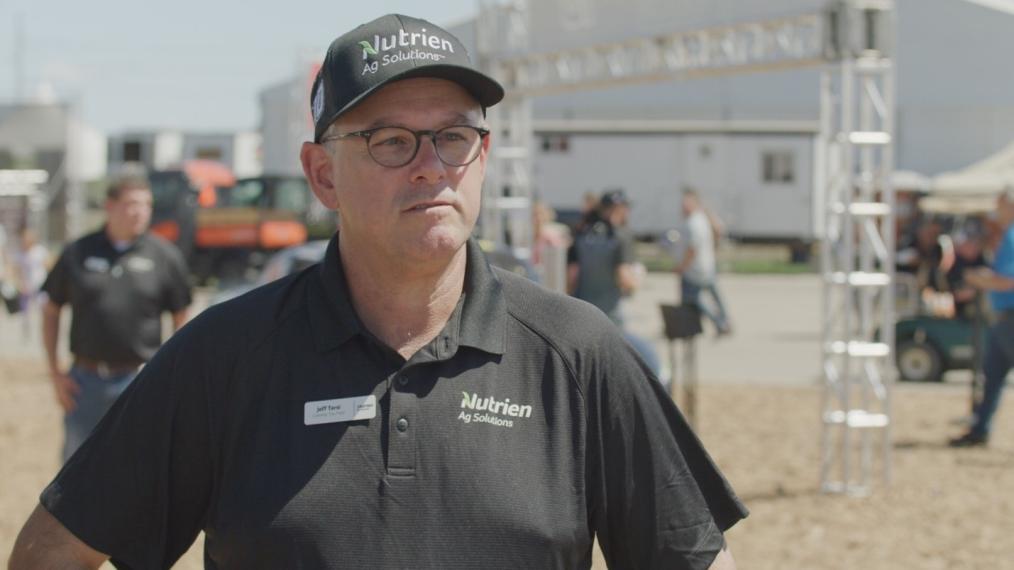The Ag Sustainability Story You Might Not Know

Nutrien's new research could not come at a more pivotal time.
Jeff Tarsi, Executive Vice President and President of Global Retail, Nutrien
Conversations around sustainable farming and foods continue to increase as consumers become more interested in how their food is grown. Meanwhile, the global spotlight on climate is intensifying across all sectors.
Based on this research, many consumers are unsure if farmers are committed to environmental sustainability. There is also a disconnect around whether farmers are keeping up with the pace of innovation and are willing to update their agronomic practices.
That could not be further from the truth. Here are the facts.
Amid rising greenhouse gas emissions for sectors like energy generation, transportation, and manufacturing, global emissions from agriculture have held relatively steady over the past 30 years despite farmers worldwide needing to feed 48% more people.1,2 In Canada, agricultural emissions held steady between 2018 and 2021, while in the US, they dropped 5%.3,4 Meanwhile, most American and Canadian farms added more respective GDP value over that same span.5,6 All the while, real wages for hired US farmworkers (adjusted for inflation) have increased by an average of 2.5% annually between 2016 and 2021 and are up 50% on an inflation-adjusted basis since 1990.7
In short, the agricultural industry has a yearslong track record of producing more, paying better, and polluting less.
Is there room to do better? Of course. The industry has more progress to chart. We are on an ongoing path to innovate for more sustainability and productivity, ideally spurred by market competition and thoughtful public policy. However, we must also acknowledge the collective progress we have already made. We must bridge the divide in trust by finding common ground.
Through mutual respect and understanding, knowledgeable consumers can become advocates for the agriculture industry. It starts with action and then extends to communication. To shift thinking on sustainability in agriculture, consumers must see visible representations, data-backed results, and examples of how technology can create sustainable outcomes and improved affordability.
Consumers must also see the starkly different realities farmers face to reduce their emissions compared to other large institutions and industries. For farmers, regenerative practices that improve sustainability – cover crops, lower-till seeding, fertilizer and irrigation management, and so forth – come at a high cost in the form of up-front expenditures and uncertainty on future crop yields. Large industry partners, in turn, need those farmers to participate in such programs to meet their own corporate sustainability goals as they work to reduce downstream (Scope 3) emissions. Those partners need to incentivize farmers and reduce barriers to participation.
These efforts require more time, more partnerships, and more public understanding. And it starts with consumers having the correct information about agriculture.
Consumers must have a front-row seat as farmers and their industry partners work to lower emissions and raise efficiency as they bring nutritious, affordable and sustainable food to your plate. Agricultural stakeholders must leverage the broad agreement the consumer already share – as Nutrien’s study demonstrates – that the industry is vital to building a sustainable future. I could not agree more: We are at ground zero in the fight to reduce emissions while feeding a growing population.
Farmers and their industry partners must demonstrate what they are proactively doing to move the industry forward and show that they are not just responding to regulatory constraints. Most importantly, consumers need to understand this magnitude of change does not happen overnight. It is not always a linear process: Ag companies and farmers are testing and learning as they work to cut emissions as much as possible while ensuring they can feed the world efficiently and effectively.
It is not an easy job, but farmers are making progress each growing season. We all must recognize and appreciate this as we lend a hand – and an ear – towards the vital work farmers are doing, the progress made, and the work still to come.
Endnotes
- Our World in Data, “Annual Greenhouse Gas Emissions by Sector,” published in 2020
- World Bank, “Total Population,” last updated in 2022
- Government of Canada, “Greenhouse Gas Emissions: Agriculture Sector,” last modified June 29, 2023
- S. EPA, “U.S. Emissions, Agricultural Activities,” last updated April 20, 2023
- Trading Economics, “Canada GDP from Agriculture,” last updated August 2023
- S. Department of Agriculture, “Value Added to U.S. GDP by Agriculture and Related Industries, 2011-21,” data current as of Dec. 22, 2022
- S. Department of Agriculture, “Wages of Hired Farmworkers,” last updated March 22, 2023
%20without%20Tagline%20(PNG).png?width=2616&height=560&name=Nutrien%20Logo%20(COL)%20without%20Tagline%20(PNG).png)

